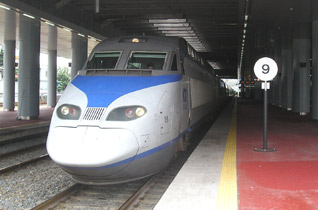Seoul Station, Station Map, KTX Map & Getting There Can Be Fun For Everyone


South Korea's High Speed Rail System Explained - YouTube
The Buzz on From Incheon Airport to Seoul - Korea Tourism Organization
The upgrade and electrification of these sections of the Gyeongbu Line was contributed to the project, and also the upgrade and electrification of the Honam Line from Daejeon to Mokpo, providing a 2nd route for KTX services. The spending plan for the very first phase was set at 12,737. 7 billion won, that for the whole project at 18,435.
While the share of federal government contributions remained unchanged, the share of foreign loans, domestic bond sales and personal capital changed to 24%, 29% and 2%. Try This and rolling stock were created in the structure of a technology transfer arrangement, which combined up Korean companies with core system provider Alstom and its European subcontractors for various subsystems.
1 billion or 1. 5 billion. KTX train approaches Miryang station, on the non-high-speed Daegu-Busan area Well ahead of the opening of the Gyeongbu HSR for regular service, in December 1999, 34. 4 km (21. 4 mi) of the test section, later reached 57 km (35 mi), was completed to make it possible for trials with trains.

The Fastest Trains in the World
6 km (138. 9 mi), with 15. 0 km (9. 3 mi) of affiliations to the traditional Gyeongbu Line, consisting of at a short interruption at Daejeon. The high-speed section itself included 83. 1 km (51. 6 mi) of viaducts and 75. 6 km (47. 0 mi) of tunnels. Conventional line electrification was ended up over the 132.
The Buzz on KTX - Seoul to Busan, Daeju etcTrain - TrainReview
5 mi) across Daegu and on to Busan, the 20. 7 km (12. 9 mi) across Daejeon, and the 264. 4 km (164. 3 mi) from Daejeon to Mokpo and Gwangju. After 12 years of building and construction and with a last cost of 12,737. 7 billion won, the initial KTX system with the very first phase of the Gyeongbu HSR entered into service on April 1, 2004.
1 billion won, with funding from the federal government and personal sources by the exact same ratios as for phase 1. In August 2006, the project was customized to again include the Daejeon and Daegu metropolitan area passages, in addition to additional stations along the phase 1 section. For these additions, the budget plan in addition to the federal government's share of the funding was increased.
